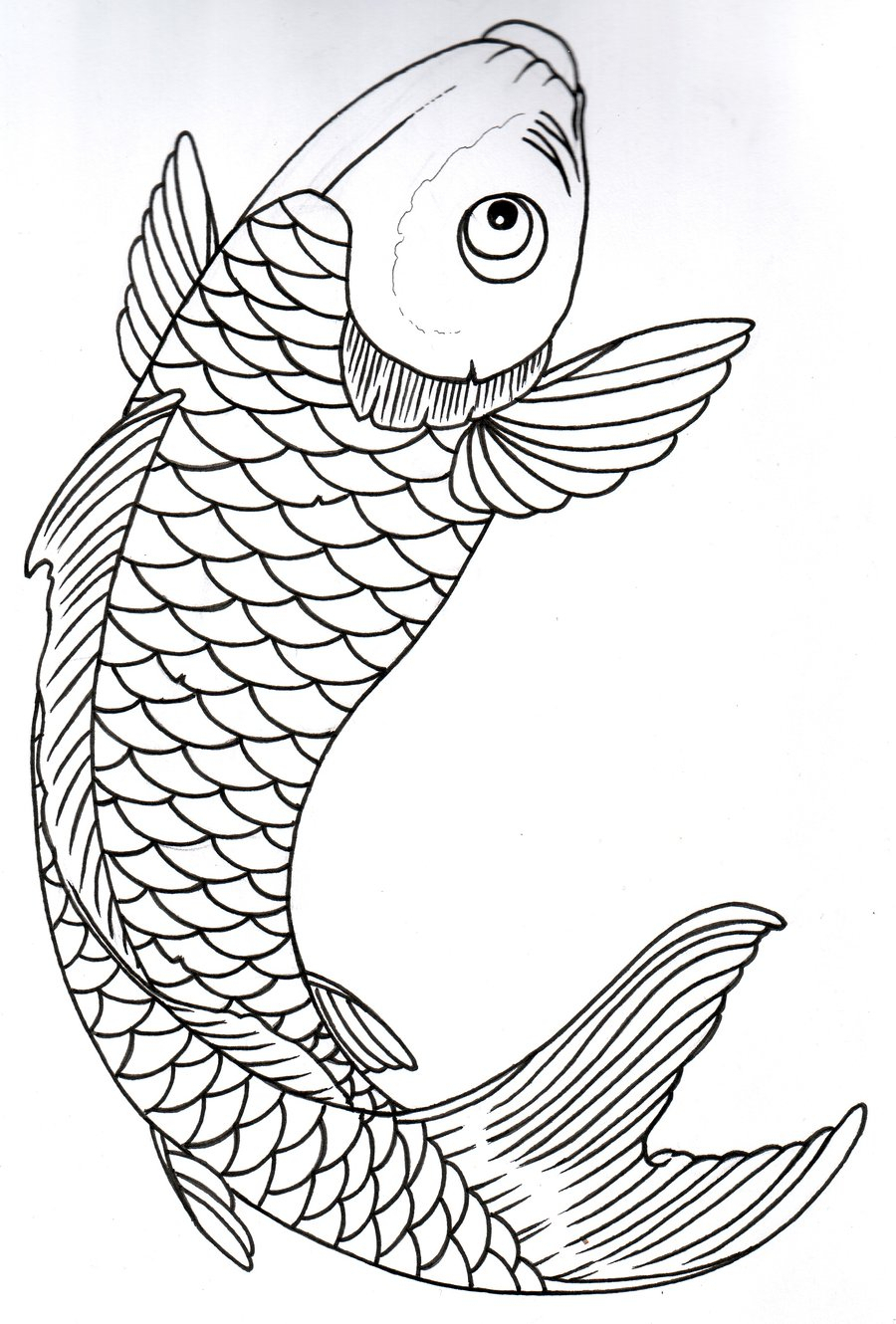

With the negative painting technique, the koi is practically jumping out of the page! But this effect needs to be toned down a little. This should lift out most of the paint! Step 5: Finishing Off Tip: If you ever make a mistake, use a paper towel and dab at the area. Switch between your three different dark mixes as well to add some colour variety to the background, and take care to paint around the trickier areas of the fish. Painting around your subject is what’s known as “negative painting”, and it’s great for tackling white-coloured or lighter-coloured things like this koi fish! 3 round brush for the more delicate areas. You can alternate between two brushes – the large mop brush for the large areas, and the no. In fact, it should start to “bead” or “pool” along the bottom edge of where you’ve painted, which you can use to not only create a seamless wash but also to “pull” into the smaller areas such as between the fins. Your brush should be loaded with both water and paint to get a very watery yet saturated liquid. Once it’s ready, prop your painting at an angle to let gravity help with painting such a large area! Then, take the purple-pink mixture, and paint the background starting from the top. To prevent the background colour from bleeding into the fish, it’s best to wait for the fish to dry first. You can mix the fourth colour by adding green and a little yellow, though Jun ends up not using this colour in his painting. Next, take the large mop brush and mix three wells of colour – one with indigo and alizarin crimson for a purple-pink, one with indigo and Winsor blue (or any cool blue) for more of a navy blue colour, and one that’s mostly indigo in colour. Just be careful around the shadows you previously painted, as they might lift out with the extra water. Tip: If your paper has already dried, you’ll need to rewet the whole fish again. You can vary the colour a little by adjusting the ratio of red to orange, or even drop in some alizarin crimson for a cooler red colour. The paper should still be damp, but not really wet.ĭrop some saturated vermillion or a brick red to paint the spots and patterns, and let the edge of the paint bleed out a little bit for a softer patterned look. If your paper is still quite wet, use a paper towel to gently dab at the fish’s patterns. You also have to work pretty fast with this technique, so it’s a good idea to pre-mix your paints on your palette before you start painting.


Tip: Adding paint to a wet surface is commonly known as the “wet-on-wet” technique. Since the light is coming from above and to the right, the shadows should be to the left and under the fish.įor a little more contrast, mix a warm shadow using yellow and a touch of vermillion or orange, and paint in a little of the top right side of the fish. Next, mix burnt sienna and ultramarine blue for a neutral grey, and dilute it a bit for a light grey to paint the fish’s shadows. You can go outside your pencil lines a bit since any paint that bleeds outside the fish will be covered up once we paint the surrounding water. When you’re done, use the large mop brush to wet the entire fish with clean water. The sketch should be done lightly and loosely, and shouldn’t take longer than 5-10 minutes! Step 2: Wet-on-Wet Shadows Jun likes to draw in a “sketchier” style, and leave his lines as-is, but if you have to use an eraser to tidy up some of your lines, that’s fine too. To start, use the pencil to do a quick sketch of the koi, making sure to fit the entire S-shaped fish well within your borders. Having the reference photo handy is a good idea as well, though we’ll only be painting the rightmost koi fish. 100% cotton paper shines in this case, and I recommend not settling with anything less than 300gsm paper! Your paper should also be taped down to a wooden board with artist’s tape, to minimise warping.īonus tip: Since we’ll be using a lot of the wet-on-wet technique, it will help if your paper takes longer to dry, while also holding a good amount of water. For this lesson, you’ll need: an A4 sheet of cold press watercolour paper, a pencil, watercolour paints, a palette, a size 10 and a size 3 round brush, a large mop or quill brush, two containers of water, and paper towels. If you’re ready, we can dive right in! Step 1: Pencil Sketchįirst thing is to do a little prep work.

#Koi fish sketch how to#
In this demo, let’s get down to some “fishy” business with artist Jun-Pierre Shiozawa! He’ll be teaching how to use wet-on-wet and negative painting techniques to paint a beautiful koi fish in a pond.


 0 kommentar(er)
0 kommentar(er)
